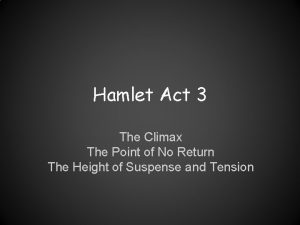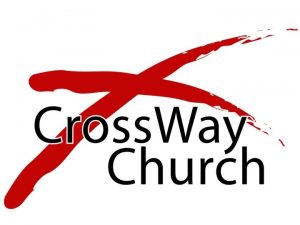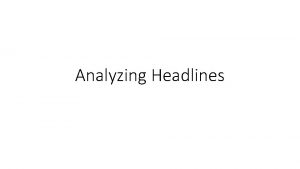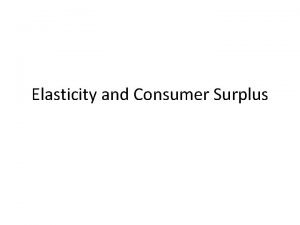Headlines III Elasticity What does elasticity measure Know








- Slides: 8

Headlines III

Elasticity • What does elasticity measure? • Know how to measure the elasticity of demand for a good wrt its price from a graph or table • Interpret an elasticity value • Know how the price elasticity of demand affects how the amount spent on a good changes when the price of the good changes.

Market Structures • Perfect competition – Many firms and identical goods • Monopolistic competition – Many firms and differentiated goods • Oligopoly – Few firms and similar goods • Monopoly – One firm

Monopoly • • • Understand: Bases for monopoly Profit maximization for a monopoly Social efficiency of monopoly Regulation of monopoly Pricing strategies

Strategic Behavior • Know the Prisoner’s Dilemma game and how it applies to real world situations. • Understand the Nash Equilibrium and how it applies

Information 1. Use the concept of rational search to find the optimal amount of information market participants should obtain 2. Explain how middlemen add value to market transactions 3. Define asymmetric information and describe how it leads to the lemons problem 4. Discuss how advertising, conspicuous consumption, statistical discrimination, and other devices are responses to asymmetric information

Labor Markets etc. • Understand the hiring decision of the firm • How are wages and employment determined in a competitive labor market • What factors do economists offer to explain differences in wages? •

Public Goods and Taxation 1. Use the concepts of rivalry and excludability to distinguish among private goods, public goods, collective goods, and common goods 2. Show economic concepts can be used to find the optimal quantity of a public good and describe the ways in which private firms can supply public goods 3. Analyze the types of efficiencies and inefficiencies that are associated with provision of a public good 4. Discuss the criteria that should be applied to taxation to promote efficiency















